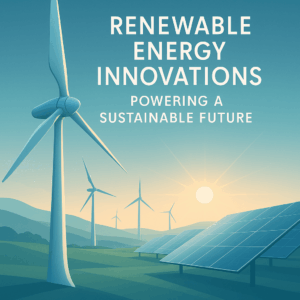Mastering Leadership in the Energy Business: Strategies for a Future-Forward Workplace
Energy is the lifeblood of modern civilization, but the energy business itself is an ever-shifting beast—driven by volatile markets, rapid technology advances, and evolving energy policy frameworks. For leaders aiming to thrive and drive change in this sector, mastering the intersection of leadership, productivity, and technology is not optional—it’s existential.
Drawing from multiple case studies across utilities, renewables, and energy tech startups, the recipe for success lies in decoding industry trends while embedding sustainability in business operations. Here’s how leadership can shape the future energy landscape through smart business solutions, innovative workplace culture, and cutting-edge energy technology.
Embed Sustainability in Business Strategy—Because Energy Demands It
The push toward renewable energy innovations isn’t just a green checkbox—it’s a business imperative. Energy policy updates worldwide increasingly favor decarbonization, and market forces reward companies that align their operations accordingly. Leaders who champion sustainability are not only future-proofing their organizations but unlocking new growth avenues.
Take Ørsted, the Danish energy giant that transformed from a fossil-fuel-focused utility to a renewable energy powerhouse within a decade. Their leadership team drove this change by integrating sustainability into every layer—from R&D investment to supplier partnerships. This holistic approach to sustainability in business catalyzed market trust and enabled entry into emerging offshore wind markets, demonstrating that profitability and purpose can coexist.
For energy business professionals, the takeaway is clear: embed sustainability into core strategy rather than treat it as an afterthought. Not only does this mitigate regulatory risks, but it also attracts ethically minded investors and customers. Leaders must champion energy solutions that marry profitability with planet preservation.
Leverage Energy Technology to Boost Productivity and Innovation
Energy technology is revolutionizing how companies operate, from smart grids and IoT-enabled monitoring to AI-driven predictive maintenance. Forward-thinking leaders harness these tools to improve operational efficiency, reduce downtime, and strengthen decision-making.
Consider a mid-sized utility that implemented a digital twin platform—a virtual replica of its infrastructure—to simulate stress scenarios and optimize maintenance schedules. The result was a 15% reduction in outages and a significant increase in workforce productivity. This is not technology for technology’s sake; it’s technology as a business solution that directly elevates output while reducing costs.
Leaders in energy must foster a workplace culture that embraces tech adoption. Resisting technological change breeds stagnation in a sector where agility is critical. Training programs, cross-functional innovation labs, and partnerships with tech startups can accelerate this transition. The buzzword is “digital transformation,” but the outcome is clear: smarter, faster, and more productive energy businesses.

Foster a Culture of Leadership Across All Levels
In today’s energy sector, leadership isn’t a title; it’s a mindset entrenched at every organizational tier. The complexity of energy policy and the speed of industry trends require decentralized decision-making bolstered by clear vision and trust.
The best energy companies cultivate leadership development programs that empower frontline employees. This approach proved invaluable during the rapid integration of renewable energy assets, where on-the-ground expertise determined project success. By nurturing this distributed leadership, companies foster resilience and innovation.
Consider the example of a Canadian renewable energy firm that rolled out a “leadership incubator” initiative. Here, junior engineers and project managers received mentorship on strategic thinking and stakeholder engagement. Within 18 months, project execution speed improved by 20%, and employee turnover dropped notably.
Leadership development is a productivity lever disguised as professional growth. Organizations that invest in their people’s leadership capabilities are primed to navigate market shifts and regulatory changes with agility and confidence.
Case Studies Illuminate Practical Pathways
Two contrasting case studies reveal invaluable lessons. First, a U.S.-based traditional utility that failed to embrace renewable innovations or update its energy policy advocacy saw market share erosion and sluggish growth. Their leadership hesitated on adopting new technology and maintained rigid hierarchical structures, resulting in slow decision cycles and employee disengagement.
Conversely, a European energy startup focused on distributed solar solutions embraced lean leadership and agile practices. By fostering an innovation-driven workplace culture and aligning product development with emerging energy policies, they secured Series C funding within two years and scaled rapidly. Their ability to pivot quickly in response to fluctuating incentive programs was a direct product of empowered leadership and relentless focus on productivity.
These examples underscore that integrating business solutions with evolving energy trends and technology adoption is vital. Leadership that blends strategic vision with operational excellence makes all the difference.
Practical Advice for Aspiring Energy Business Leaders
1. **Stay Ahead of Energy Policy**: Renewables and sustainability incentives are reshaping the marketplace. Regularly update your knowledge and factor policy trends into business decisions.
2. **Invest in Technology**: Don’t just automate—invest in technologies that enable predictive analytics, improved asset management, and enhanced customer engagement.
3. **Cultivate Leadership Across Teams**: Leadership isn’t just top-down. Empower colleagues at every level to take initiative and innovate.
4. **Champion Sustainability Seriously**: Make it integral, not peripheral. Embed measurable sustainability goals into your business KPIs.
5. **Foster an Adaptive Workplace Culture**: Encourage experimentation and learning. An agile culture is essential for navigating the energy sector’s uncertainty.
The energy business sits at the confluence of regulation, innovation, and societal expectations. Leadership that balances visionary strategy with operational agility can chart a clear path through complexity, transforming challenges into opportunities. After all, as Peter Drucker wisely said, “Management is doing things right; leadership is doing the right things.” In the ever-evolving energy industry, doing the right things—sustainably and smartly—is the ultimate leadership act.



